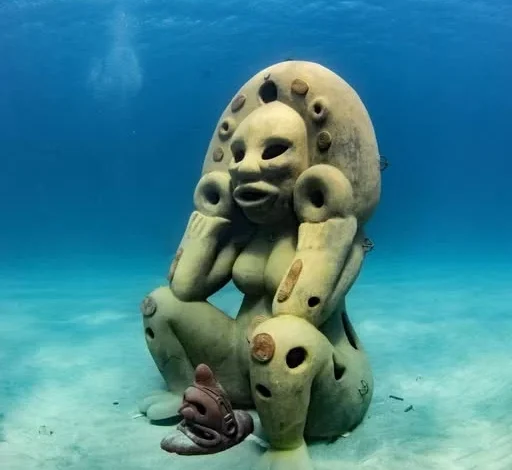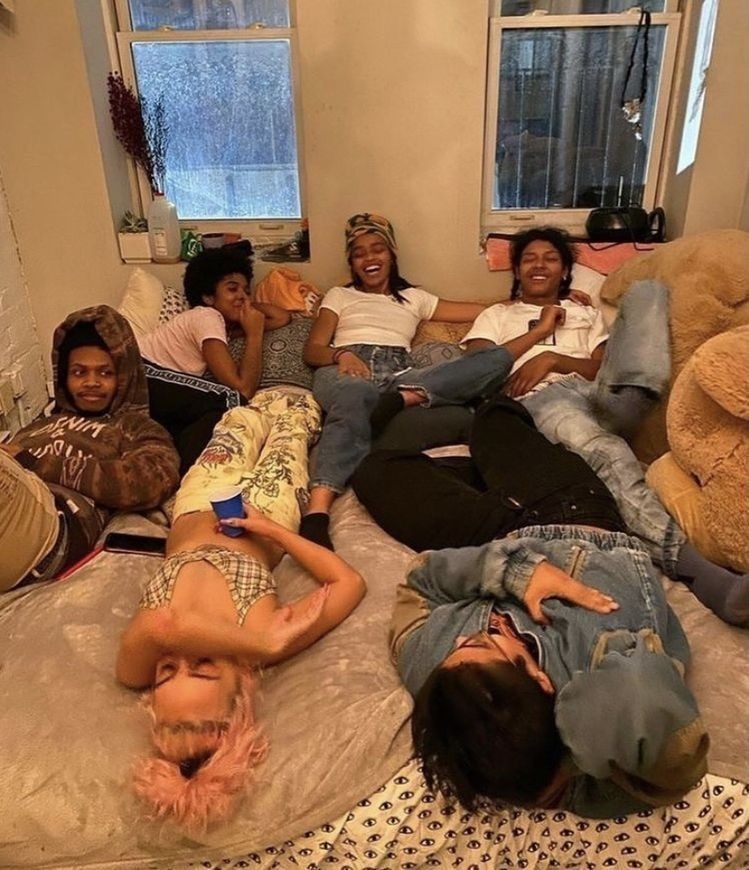“Europe created the concept of savageness and barbarism as antithesis to its modernity and civilisation. Henceforth, Europe was to represent the modern model and the rest was to represent the antiquity; the traditional”
Rabah Omer ‘The Modern and the Traditional: African Women and Colonial Morality’
During the 15th Century, Europeans set out on a quest to modernise their societies in order to achieve their version of civilisation. Civilisation to them involved the abandonment of antiquity and old ways of life, including dressing, for more ‘modern’ ones. Around this time, Europeans also began to discover the existence of foreign cultures. Thus, anything not akin to the standard of civilisation that they hoped to achieve for themselves became detestable. ‘Modern’ to Europeans only encompassed things envisioned by them, meaning that other cultures did not fit this standard. Therefore, the further away African culture was to what they considered civilised, the more it was deemed as ‘native’ and ‘primitive’ and therefore believed that it needed to be modified to suit their taste.
This mindset was imposed on Africans during colonialism and only served to create an inferiority complex, permeating through different cultural expressions. One such cultural expression that was affected during colonialism is dressing. The coloniser, through calculated tactics, created a situation where European clothing is generally more valued than African clothing. This is illustrated in various ways. For instance, in most corporate settings in Africa, traditional African attire is not considered proper enough to be worn for professional purposes as the abandonment of traditional ways of life was a tactic of Imperialism. This article will illustrate the impact of European colonialism on African dress and the impact this has had on African countries.
The first section will paint a picture of what Africans wore in ancient times before colonialism. The second section will use case studies to illustrate the Western perspective of African clothing and how this has shaped African fashion today. The third section will highlight the recent trend of embracing African fashion and making it more mainstream and the importance of making it more than a trend. This essay is not intended to cover the diverse experiences of all African countries, but to shed light on the commonalities of the unique experiences.
What did ancient Africa wear?
Although it is hard to chronologically follow the evolution of African dressing due to the absence of written records of ancient times, we are, however, able to ‘piece’ together from a range of sources such as masquerades, artifacts (sculptures) and traditional robes
passed down to posterity.

A close inspection of ancient African dressing would reveal that in some regions, Africans went naked and in some, clothing was scanty. Despite this, there was a plethora of distinct modes of dressing and adornment amongst the various ethnicities which are now grouped under 54 countries. The adornments and clothing styles were a significant marker of culture, gender and social class. For instance whilst the Igbos in Nigeria wore minimal clothing only to cover their private parts, the elders were usually fully dressed. In some parts of Africa, men would wear loincloths that wrapped around their waist and between their legs to be fastened at their back’ whilst some sewed bark together to cover up their private parts. Popular African sculptures display nudity and therefore capture the status quo at the time; minimal dress or no dress at all.
“Africans also wore clothing made of ‘Fur, skins, bone, animal tails and hair, raffia, wood, grass, bells and pressed metal all contributed to a rich and embellished costume, used especially for ceremonial purposes”.
– African Fashion: History and Future
The European perspective of African dressing was largely negative. They perceived Africa as part of the ‘dark world’ of animalistic practice; a perspective rooted in racism and white supremacy. During European imperialism, Europeans went to great lengths to prove that they were superior to non-whites. In Africa, they did this by continuing to wear clothes fit for their own climate such as woolen suits and corseted dresses for women; eventually causing them to suffer from tropical neurasthenia. Unfortunately, this illness failed to make them realise the practicalities of dressing for the climate. Meanwhile, whilst perpetuating a strong distaste for African dressing, Europeans appropriated aspects of African dressing in order to revitalise their own fashion industries.
The prejudicial judgment of Europeans was also rooted in Christian notions of morality which placed a focus on ‘modesty’ and the European standard of modesty meant covering up the body. The fetishisation of the African body by the Whites also caused them to view our nakedness as immorality and thus caused us to rebuke nudity and ‘revealing’ clothing. Unfortunately, this mindset has been imposed on Africans and those who dress appropriately for tropical weather are overly sexualised, scrutinised and rejected, especially in religious communities. This problem causes a particular disadvantage to women as ‘slut-shaming’ and objectification is the order of the day when a woman decides to dress in conformity with the weather.
The Evolution of African dress
It is evident that modes of dressing around the world are largely different from what they were in ancient times due to changing tastes and international influence. International influence through trade modified various aspects of life for nationals of various African countries. Europeans and Arabs in the 15th and 16th centuries influenced ancient African clothing in a much more subtle way than with colonial rule. Before the Portugese came to Africa in the 1500s, Arabians from harbour ports like Sayhut and Tarim sold cotton cloth to the east African coast in exchange for wine, iron tools and other items. This cotton cloth was then used for the production of clothing.
Similarly, the Dutch, who colonised Indonesia, sold Indonesian batik to West Africa. The Dutch East India Company, established in 1602, tailored designs made from Indonesian batik to African taste after market research was conducted in Africa. These Dutch wax prints, popularly known as Hollandaise were sold to Africans and in the early 20th century, African textile factories began to produce these materials themselves. Imported shells, beads and buttons were also implemented into African fashion as accessories. Africans also began to improve in their production of clothing made of silk, wool, cotton and raffia improved to suit their evolving taste.
How Colonialism Changed African Dressing
“Throughout the colonial world, missionary-inspired dress often with links to traditional dress, developed in many directions. European styles and fabrics were incorporated in many places”
Rabah Omer ‘The Modern and the Traditional: African Women and Colonial Morality’
Colonialism brought about more of a drastic change to African dressing. It afforded Europeans control over the dressing of their subjects and the mission to clothe ‘the natives’ was enforced by the missionaries as a tactic to convert their subjects to Christianity. This tactic was mostly successful. For instance, the Samoans accepted to cover up their bodies by producing ponchos made of bark cloth, Melanesians created a dress that incorporated European floral designs and embroidery, and the Herero dress was created in southern Africa and is accepted as the national dress.
Men of the Kalabari tribe of Southern Nigeria incorporated European style hats into their dressing. Trousers were also incorporated into most male dressing in countries subject to colonial rule. These clothes have become the standard of traditional African dressing albeit being very Westernised. Therefore, when we think of African clothing, these are the clothes that first come to mind as what is inherently African dressing was phased out.
Whilst there was a modification of African dressing, European dressing was placed in higher esteem during colonial rule. Men amongst the elite were quick to embrace the European suit which was a “hallmark of colonial authority” as it “signified status, education, and colonial employment”. Soon, corporate settings phased out African attire in favour of European suits and dresses. Africans that aspired to have gainful employment therefore had to conform to this new norm. The implication of this is still evident in today’s society where European clothing is worn on a daily basis in professional settings and usually only permitted on ‘casual Fridays’.

Moreover, school uniforms are not suited for tropical climates but for European weather. Think about it this way, the idea of wearing a bikini outdoors in winter seems obviously ludicrous but is not much different from wearing jackets in hot weather as Africans usually do.
So why is dressing such a big deal?
These dress codes cause a multi-faceted level of discomfort that most Africans living in Africa seem to have become accustomed to. For instance, whilst sweating in my long-sleeved shirt and tie on a daily basis during my school days in Nigeria, it dawned on me that we had been brainwashed into orchestrating our own discomfort. In a seminar I attended in Nigeria, I witnessed someone run out of the poorly air conditioned, stuffy seminar room, hyperventilating whilst ripping off her jacket, which she wore to conform with the dress code. The incident was merely brushed off and not taken as a serious issue by the program organisers. Such incidents are a consequence of African governments’ struggle to provide 24/7 electricity and in turn, air conditioning to create conducive temperatures for mandatory dress codes.
This problem is compounded by the fact that most modern buildings in African countries are not built with concern for the climate. Bearing in mind that running air conditioners for long periods of time is a health hazard and is also damaging to the ecosystem, it is evident that it would do us a world of good for corporations to scrutinise their colonial dress policies. In the times of global warming, it is imperative for Africans to begin to incorporate eco-friendly behaviour into our daily lives so as to meet sustainable development goals. Changing the way we dress is a progressive step to achieve this.
This is not to discredit the Africans who still make a conscious effort to make African dressing more mainstream. The current status quo, however, still reflects the fact that there is a deep inferiority complex as most Africans value European and Anglo-American clothing over African clothing. One example of this is the fact that foreign designers are usually patronised more than African designers, hindering the growth of the African fashion industry. Moreover, the continous importation of second-hand clothing from Europe and Anglo-American countries has meant that it is cheaper to wear foreign clothes than African attire. This makes it difficult for local manufacturers to break through in the clothing market. This issue is what has motivated some East African countries to start phasing out the importation of second-hand clothes in order to boost their economy. Furthermore, although some professional settings now encourage cultural clothing; such as government institutions in some parts of Africa such as Nigeria and Kenya, the dress policy in most African countries still perpetuates the idea that African dressing is not to be taken seriously even after being severely modified.
Unfortunately, the consequences of colonialism are still deep-rooted in Africa today. On the one hand, we are currently at a time where Africans at home and in the diaspora are embracing their African roots, and on the other hand, an inferiority complex is hindering our development as a people. African designers struggle to compete with European and Anglo-American designers as the latter are considered mainstream and fashionable whilst clothing of other regions are simply deemed ‘traditional’ which is associated with being stagnant. Although foreign influence has its benefits in different facets of life, it becomes problematic when one’s way of life is belittled. African culture in all its richness was stripped away and dressing was only one of the facets affected. The tactic of the coloniser was to pick apart different expressions of our culture and creativity to make it easier to be controlled. Africans must be aware of this fact as a first step to African development.
Although it is good to embrace change, it is important to scrutinise these changes and evaluate which changes are harmful and must be expunged. We must see the fashion situation in Africa as it is. In the words of Andre M. Perry, “when dress and grooming reinforce white norms, being black becomes a violation”. Therefore, we should evaluate why we dress the way we dress and whether it is doing us more harm than good. Whilst it is unrealistic for White fashion to be phased out of Africa as it is the current norm, it is imperative that African fashion be treated on par with White fashion. We must reclaim our cultural expressions as this is what we can proudly call ours. We must question the negative stereotypes associated with wearing African attire, whether modernised or ‘traditional’. We must destigmatize the word ‘traditional’ along with its negative connotations.
READING LIST
Omer, R. (2017). “The Modern and the Traditional: African Women and Colonial Morality.” Inquiries Journal, 9(10). Available at: http://www.inquiriesjournal.com/a?id=1655
Jama, S. (2020). ‘Clothing in pre-colonial Africa…insight into nudity claims’. Available at: https://www.thepatriot.co.zw/old_posts/clothing-in-pre-colonial-africainsight-into-nudity-claims/
Rovine, L.V.(2009) ‘Colonialism’s Clothing: Africa, France, and the Deployment of Fashion.’ Design Issues 25 (3), 44–61. doi: https://doi.org/10.1162/desi.2009.25.3.44
Craik, J. (2003). The face of fashion: Cultural studies in fashion. Routledge.
Hansen, K. T. (2004). Colonialism and Imperialism. V. Steele, a cura, Encyclopedia of Clothing and Fashion, New York, Scribner, 1, 277-280.
Andre M. Perry, ‘School dress and grooming codes are the new ‘white only’ signs’
Abubakar, M., Oluyemi, J. A., Abdulateef, R., Emmanuel, A., Adejoke, J., & Williams, T. M. (2018). ‘Imperialism and Loss of identity in second hand clothes: The Nigerian Okrika experience’ Journal of Language, Technology & Entrepreneurship in Africa, 9(1), 151-172.






